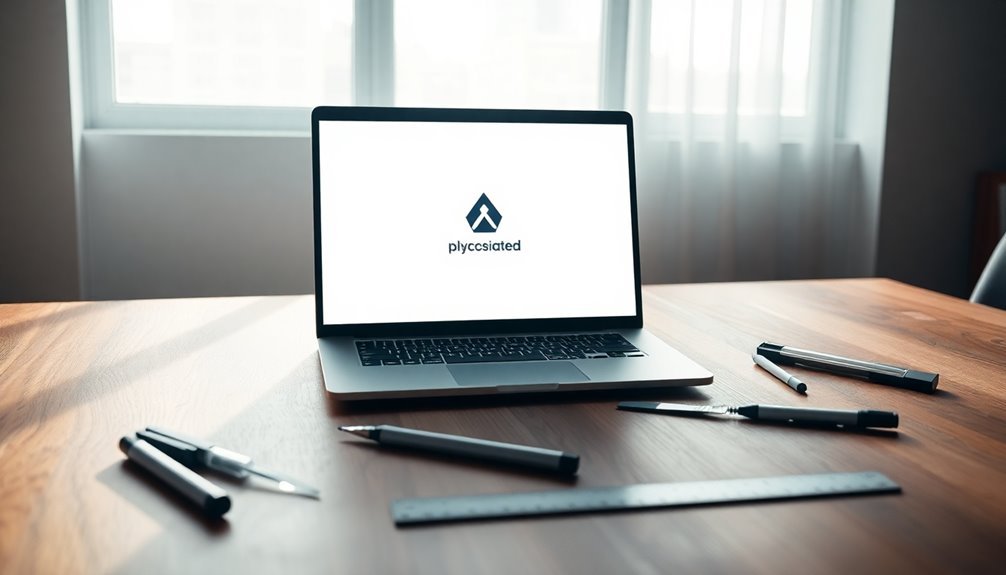To create a DIY minimalist logo, start by defining your brand identity and values. Use tools like Adobe Illustrator for precision, or explore online platforms like Canva for ease. Research design trends and gather inspiration from sites like Dribbble. Keep your design simple, focusing on clarity and limited color palettes. Don't forget to gather feedback for iterative improvements. Want to explore more tips to refine your logo creation process?
Key Takeaways
- Utilize vector graphic software like Adobe Illustrator for precise and professional logo designs that embody minimalist principles.
- Explore online logo makers like Canva and Lookas for user-friendly platforms to create quick and effective minimalist logos.
- Focus on simplicity by researching successful minimalist logos and identifying common design elements and color palettes.
- Gather feedback from your target audience to refine your designs and ensure they resonate with your brand's identity.
- Test your logo in various sizes and mediums to guarantee scalability and visibility across different applications.
Defining Your Brand Identity
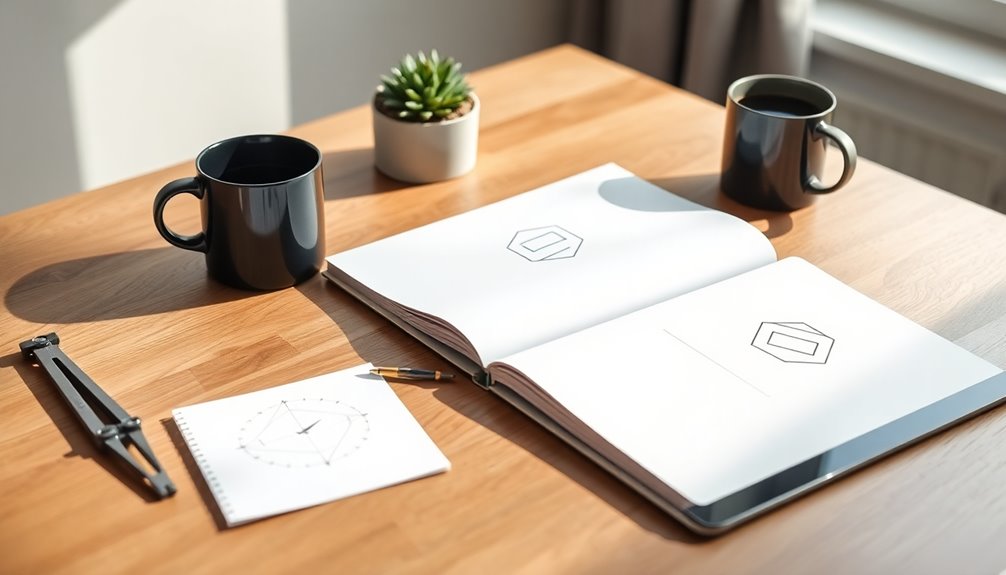
Defining your brand identity is essential for creating a logo that truly reflects who you are. Start by understanding your company's mission, values, and target audience. This clarity informs your logo design tips and helps you choose effective color schemes.
Research your competitors to pinpoint unique aspects of your brand name that can be visually represented in your logo. Create a moodboard to visualize your brand's aesthetic, guiding your design direction.
Distill key attributes like personality and tone into core elements, guaranteeing focus during the design process. Finally, engage with your audience through surveys or feedback to gather insights about how they perceive your brand identity. This will enhance your brand recognition and ensure your logo resonates effectively. Additionally, user consent is a critical factor in establishing trust and transparency in your brand's digital presence.
Researching Minimalist Design Inspiration

When researching minimalist design inspiration, start by analyzing existing logos that resonate with your brand identity.
Check out platforms like Dribbble and Behance to explore a variety of designs and trends.
Also, consider using Pinterest to gather visual references and spot common themes among successful minimalist logos. Additionally, understanding color palette choices can help you create a more cohesive and impactful design.
Analyzing Existing Designs
Exploring existing minimalist logos offers invaluable insights into effective design strategies. By analyzing successful logo design from various industries, like technology and fashion, you'll discover common elements that resonate with audiences.
Use platforms like Dribbble, Behance, and Pinterest to gather diverse minimalist logos that inspire your creative process. Pay close attention to how negative space is utilized; it can convey dual meanings, enhancing brand identity.
Study the color scheme of effective logos, noting how limited palettes contribute to clarity and recognition. Finally, evaluate typography, focusing on how clean lines and sans serif fonts improve legibility and align with the ethos of simplicity.
This analysis will greatly aid your logo creation process. Additionally, consider how art theory influences the design choices you make, as it provides a foundational understanding of visual communication principles.
Exploring Design Resources
To create a compelling minimalist logo, diving into design resources can spark your creativity and refine your approach.
Start by exploring platforms like Behance and Dribbble, where you can find a variety of minimalist logo designs from professional portfolios. Research design blogs for insights into current design trends and techniques that align with the minimalist approach.
Utilize moodboards on Pinterest or Milanote to compile colors and typography that resonate with your vision. Analyze competitors' logos to identify common themes while ensuring your design stands out.
Don't forget to explore resources like logo design books or courses that focus on minimalist techniques. As you sketch and iterate, these insights will help you craft a logo that's both impactful and memorable. Additionally, consider how elements of tropical design aesthetics can inspire your logo's elegance and simplicity.
Essential Tools for Logo Creation
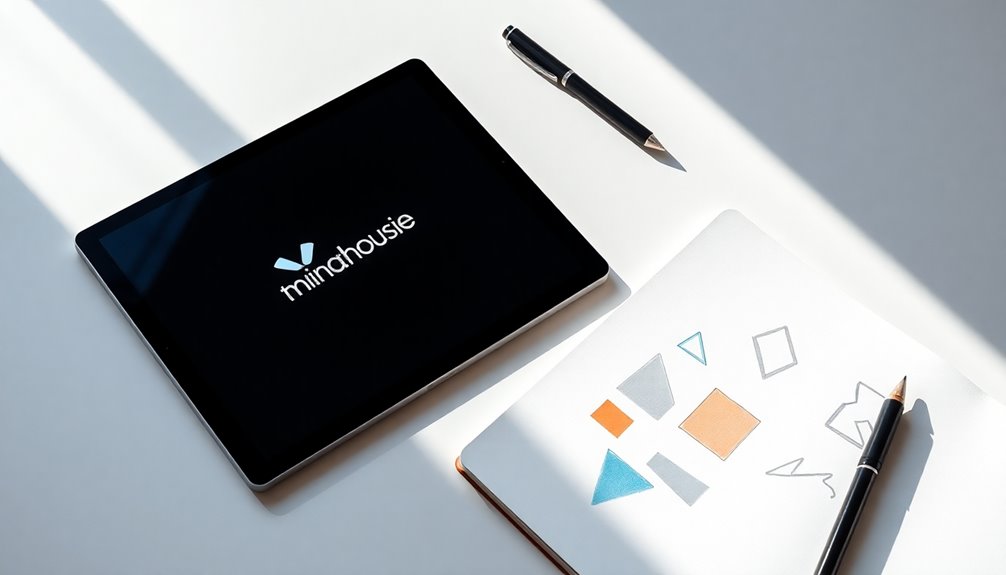
Creating a minimalist logo becomes much simpler with the right tools at your disposal. Here are some essential design tools to help you craft an eye-catching simple logo:
- Vector Graphic Software: Programs like Adobe Illustrator allow for precise design and scalability, ensuring your logo looks great at any size.
- Online Platforms: User-friendly tools like Lookas and Canva offer templates that make logo design accessible, even for beginners.
- Typography Resources: Utilize Google Fonts or Adobe Fonts for clean, modern typefaces that enhance your minimalist logo.
- Logo Design Generators: Tools like Hatchful and LogoMakr help brainstorm ideas, providing automated design options based on your style preferences.
Additionally, integrating structured data into your logo's web presence can enhance search engine understanding and visibility.
These resources will streamline your logo creation process and elevate your design game!
Steps to Create Your Minimalist Logo
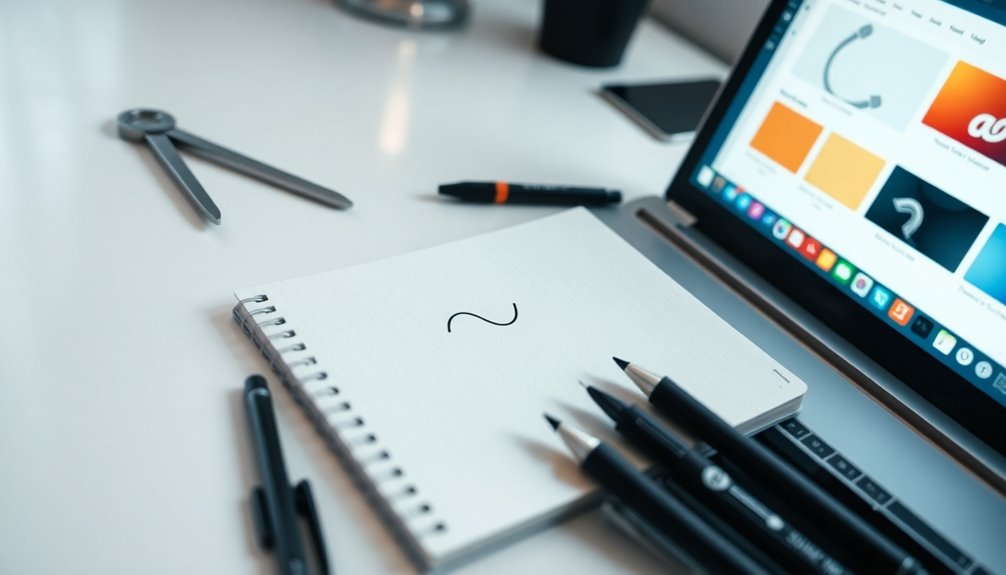
When you set out to design your minimalist logo, it's crucial to start with a clear understanding of your brand's values and mission. This foundational step will guide your logo design decisions. Next, research your target audience and competitors to identify trends that resonate in your industry.
Sketch multiple concepts focusing on simplicity and clarity. Aim to distill your ideas down to their fundamental elements. Once you have your best sketches, digitalize them using tools like Adobe Illustrator or Canva, guaranteeing clean lines and a limited color palette. Testing your logo in various applications to verify its scalability and visibility is essential, as consistency in your branding can lead to improved overall health and recognition.
| Step | Action |
|---|---|
| Define Brand Values | Understand your mission |
| Research Audience | Identify design trends |
| Sketch Concepts | Focus on simplicity |
| Test Applications | Guarantee scalability |
Tips for Effective Feedback and Iteration
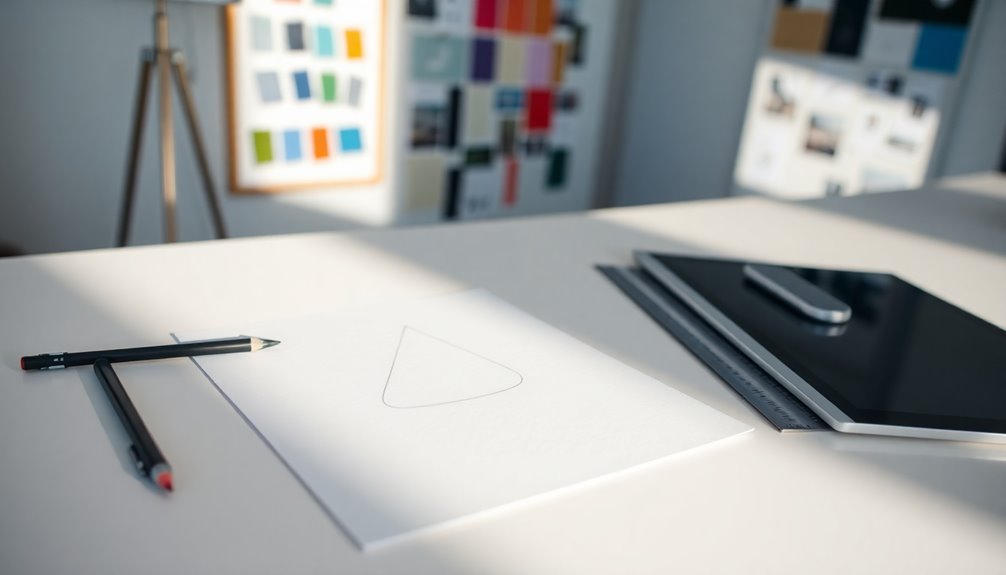
Gathering effective feedback is essential for refining your minimalist logo design, as it provides insights from diverse perspectives.
Effective feedback is crucial for refining your minimalist logo, offering valuable insights from various perspectives.
To guarantee you're on the right track, consider these tips:
- Gather Feedback: Involve peers, mentors, and your target audience to get varied viewpoints on your logo's effectiveness and clarity.
- Seek Constructive Criticism: Ask specific questions about impact, recognition, and alignment with brand values.
- Use Surveys: Quantify feedback through polls to analyze preferences and trends related to design elements.
- Embrace Iterative Changes: Be open to adjustments based on feedback, enhancing your design and addressing visibility issues effectively. Regularly review and adjust your design process to ensure it meets evolving standards and expectations.
Testing your logo in different contexts helps identify any flaws before finalizing your design.
Maintaining Consistency Across Branding Materials
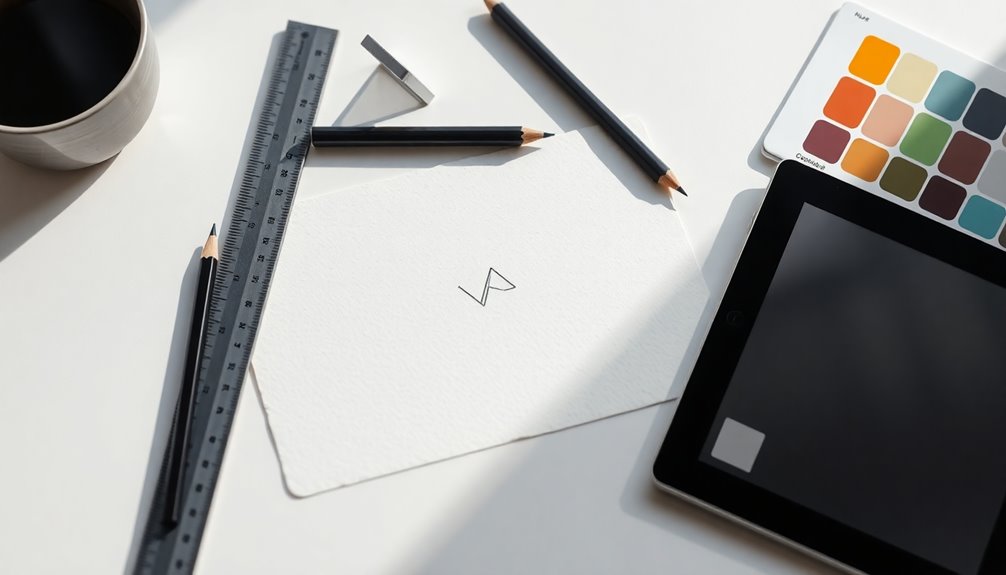
To guarantee your brand stands out, maintaining consistency across all branding materials is essential. Using the same minimalist logo across every platform—from business cards to websites—reinforces a cohesive identity.
This consistency enhances brand recognition by up to 80%, making it easier for consumers to identify your brand. Stick to a limited color palette of one to two colors to ensure visual harmony and align with minimalist design principles.
Apply your logo in a consistent layout across both print and digital media, guaranteeing it remains recognizable in any context. Regularly review and update your branding materials to keep them fresh and relevant, enhancing trust and credibility with your audience. Incorporating utilitarian principles in your branding strategy can also help align your brand's message with customer values.
Consistency is key to effective branding.
Frequently Asked Questions
How to Design a Minimalistic Logo?
To design a minimalistic logo, start by defining your brand values and mission.
Next, research successful minimalist logos to gather inspiration and analyze competitors.
Sketch multiple ideas focusing on simplicity with geometric shapes and clean lines.
Limit your color palette to one or two colors for versatility.
Finally, test your logo in various applications and gather feedback to refine it, ensuring it's impactful and easily recognizable.
Which Tool Is Best for Logo Design?
Which tool's going to help you create the logo of your dreams?
It really depends on your needs and skill level. If you're looking for ease of use, Canva's got you covered with its vast library and simple customization.
For more advanced designs, Adobe Illustrator offers professional features.
If you want quick results, Looka's AI can generate unique logos based on your preferences.
Choose the one that fits your style and vision best!
What Are the Three Rules of Good Logo Design?
When you're designing a logo, keep three essential rules in mind.
First, simplicity is key; your logo should be easily recognizable.
Next, guarantee versatility; it should look great on everything from websites to merchandise.
Finally, aim for timelessness; avoid trendy designs that might quickly become outdated.
What Are the Keywords for Minimalist Logo?
When you're thinking about minimalist logos, focus on keywords like simplicity, clarity, and versatility.
Incorporate negative space and geometric shapes to highlight your brand's identity. A limited color palette is vital, so lean towards monochromatic or two-color schemes.
Prioritize legibility with clean, sans serif typography to guarantee readability.
Conclusion
In creating your minimalist logo, remember that simplicity often leads to stronger brand recognition. In fact, studies show that logos with simplified designs can boost memorability by up to 80%! As you finalize your logo, keep your brand identity at the forefront. Embrace feedback and iterate on your design to guarantee it resonates with your audience. By maintaining consistency across all branding materials, you'll strengthen your brand's presence in the market. Happy designing!
